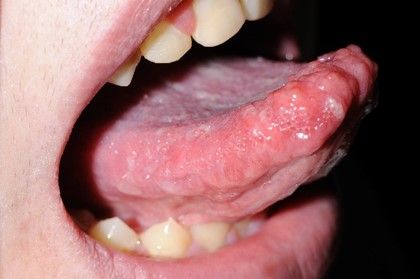Endocrine Questions
Question 1
difficulty: 8/10
A 35-year-old woman with a history of “some neck surgery” presents with episodic headaches, palpitations, sweating, and elevated blood pressure. Laboratory tests reveal elevated plasma metanephrines and hypercalcemia. Imaging shows a left adrenal mass. On physical examination, you find the following:

The neck surgery most likely involve a specific organ, which contains cells that are named the same in a different anatomical location. Which of the following would be the most accurate description of that cell?
A. Stains eosinophilic
B. Contains S-100
C. Increases serum potassium
D. Produces intrinsic factor
E. Produces lipase
Answer
E. Gastric Lipase is produced by chief cells in the stomachQuestion 2
difficulty: 4/10
A 42-year-old woman presents to the clinic with fatigue, weight gain, constipation, and dry skin over the past several months. She also reports feeling unusually cold compared to others. Physical examination reveals periorbital puffiness, coarse skin, and delayed relaxation of deep tendon reflexes. Laboratory studies show:
| Sarcoplasmic Reticulum Ca2+-ATPase activity | Phospholamban | Lusitropy | Pulse Pressure | |
|---|---|---|---|---|
| A | ↑ | ↓ | ↑ | ↓ |
| B | ↑ | ↓ | - | - |
| C | ↑ | ↓ | - | ↑ |
| D | ↓ | ↑ | ↑ | - |
| E | ↓ | ↑ | ↓ | ↓ |
| F | ↓ | ↑ | - | - |
Answer
Question 3
difficulty: 4/10
A 41-year-old woman presents to the clinic with complaints of progressive weight gain, fatigue, and easy bruising over the past 10 months. She reports that her face has become “fuller” and that she has developed fat accumulation around her upper back. Her elbows are darker than forearms. Which of the following would you expect to see?
| CRH | ACTH | ADH | Melanocytes | |
|---|---|---|---|---|
| A | ↓ | ↑ | ↑ | - |
| B | ↑ | ↓ | ↓ | - |
| C | ↑ | ↓ | - | ↑ |
| D | ↓ | ↑ | ↑ | ↑ |
| E | ↓ | ↑ | ↓ | ↑ |
| F | ↓ | ↓ | - | ↑ |
Question 4
difficulty: ?/10
In a state of hypercortisolism, which of the following would you expect as compensation?
| Firing rate of vagus afferents | ACE activity | Coagulation factor VIII activity | cAMP in vascular endothelium | Effective refractory period in cardiomyocytes | |
|---|---|---|---|---|---|
| A | ↑ | ↑ | ↑ | ↓ | - |
| B | ↑ | ↓ | - | ↓ | ↓ |
| C | ↑ | ↓ | - | ↑ | ↓ |
| D | ↓ | ↑ | ↑ | ↑ | ↓ |
| E | ↓ | ↑ | ↓ | ↑ | ↑ |
| F | ↓ | ↓ | - | ↑ | - |
G. None of the above
Question 5
difficulty: ?/10
A 28-year-old woman presents with complaints of flank pain that radiates to groin. Laboratory tests reveal elevated serum calcium levels. She also reports menstrual irregularities and occasional galactorrhea. On examination, she has enlarged hands and facial features. She has also a vitamin D deficiency. In the process for diagnosing her condition, there is a scan that uses a radioactive compound decayed from molybdenum-99. This compound is also used to study many different organs: which of the following would describe pathology of an organ that uses this same compound?
A. Hematochezia in a newborn male
B. Balloon shaped heart on x-ray
C. Ventriculomegaly and decreased dendrites
D. Napkin-ring/apple-core shaped descending colon
E. Increased AP diameter